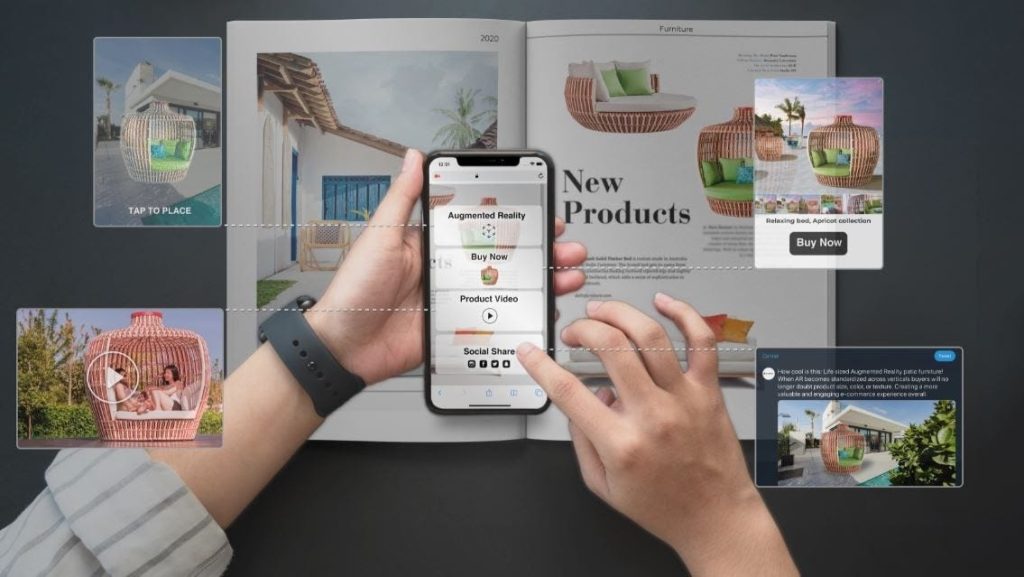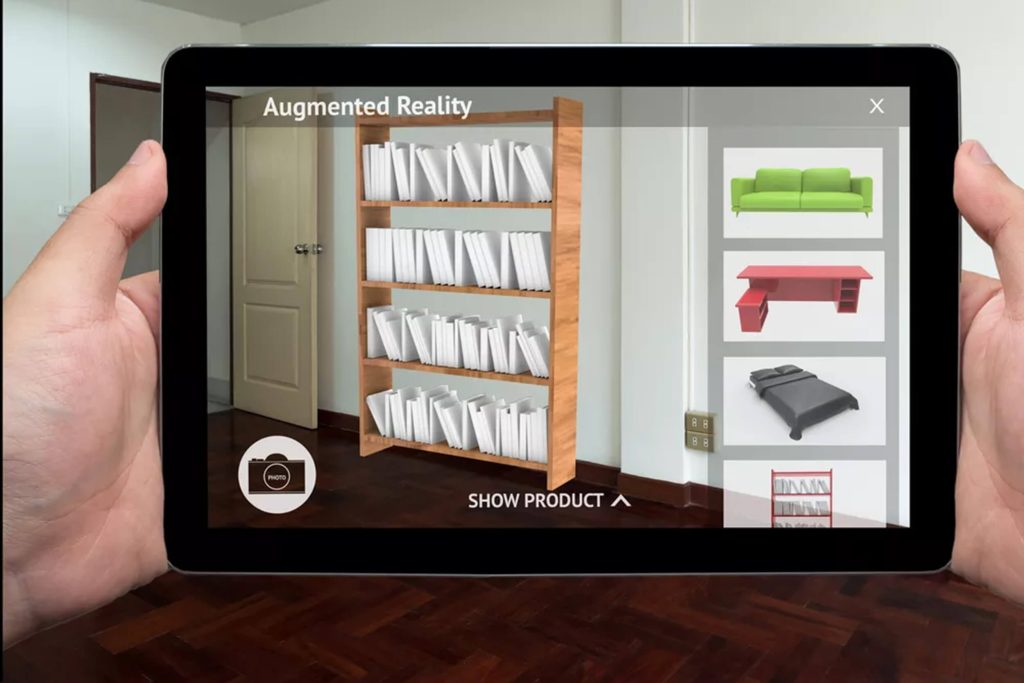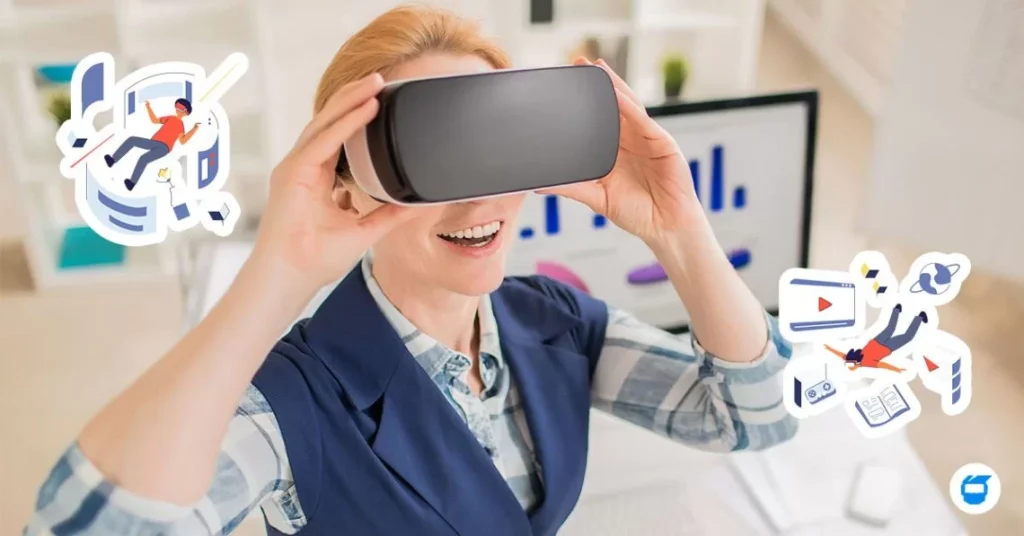Introduction
Augmented Reality (AR) is no longer confined to gaming or mobile apps—it’s rapidly transforming web design. By blending digital elements with the real world, AR enables users to interact with products and environments in immersive ways. From virtual furniture placement to interactive museum tours, AR is redefining how businesses engage with customers online. Let’s see Augmented Reality (AR) in Web Design.
This blog explores the integration of AR in web design, focusing on interactive product previews and virtual tours, their benefits, implementation strategies, challenges, and future trends.
What is Augmented Reality (AR)?
AR overlays digital content—such as images, sounds, or 3D models—onto the real world through devices like smartphones, tablets, or AR glasses. Unlike Virtual Reality (VR), which creates a fully immersive digital environment, AR enhances the real world with contextual digital information.
Why AR in Web Design?
Traditional websites rely on static images and text. AR introduces interactivity, personalization, and engagement, allowing users to visualize products or spaces in their own environment.
Key Benefits:
- Enhanced User Experience
- Higher Conversion Rates
- Reduced Product Returns
- Improved Brand Perception
- Increased Time-on-Site

Interactive Product Previews: Revolutionizing E-Commerce
1. Try Before You Buy
AR allows users to visualize products—like furniture, clothing, or makeup—in their own space or on themselves.
Example:
- IKEA Place lets users place 3D furniture in their rooms using AR.
- L’Oréal’s AR mirror enables virtual makeup trials.
Benefits:
- Builds buyer confidence
- Reduces uncertainty
- Minimizes returns
2. 3D Product Visualization
Instead of static images, AR-powered websites offer 360° views and interactive models.
Example:
- Nike’s AR shoe preview lets users rotate and zoom in on sneakers.
Benefits:
- Detailed inspection
- Better product understanding
- Enhanced engagement
3. Customization and Personalization
Users can customize products in real-time—changing colors, sizes, or features—and see the results instantly.
Example:
- Car configurators on auto websites allow users to build and view their dream car in AR.
Benefits:
- Personalized shopping experience
- Increased satisfaction
- Higher conversion rates

Virtual Tours: Immersive Exploration from Anywhere
1. Real Estate and Architecture
AR virtual tours let users explore properties remotely, walking through rooms and viewing layouts interactively.
Example:
- Zillow 3D Home offers AR-enhanced property tours.
Benefits:
- Saves time for buyers and agents
- Improves decision-making
- Expands reach to remote clients
2. Museums and Cultural Institutions
AR brings exhibits to life, offering interactive storytelling and immersive learning.
Example:
- The British Museum’s AR tour allows users to explore artifacts with contextual overlays.
Benefits:
- Engages younger audiences
- Enhances accessibility
- Promotes cultural education
3. Travel and Hospitality
Hotels, resorts, and destinations use AR to showcase amenities, rooms, and attractions.
Example:
- Marriott’s AR room previews help guests choose accommodations.
Benefits:
- Increases bookings
- Builds trust
- Enhances guest experience

How to Implement AR in Web Design
1. Choose the Right AR Framework
Popular AR libraries and platforms:
- WebXR API – Native browser support for AR/VR
- 8thWall – Web-based AR development
- Three.js – 3D rendering for AR experiences
- AR.js – Lightweight library for marker-based AR
2. Design for Mobile First
Most AR experiences are accessed via smartphones. Ensure responsive design and mobile optimization.
3. Use Lightweight 3D Models
Optimize 3D assets to reduce load times and improve performance.
4. Integrate Camera and Sensor Access
Use device cameras and sensors to enable real-world interaction.
5. Ensure Cross-Browser Compatibility
Test AR features across browsers like Chrome, Safari, and Firefox.
Challenges in AR Web Design
1. Performance and Load Times
- AR experiences can be resource-intensive. Optimize assets and use lazy loading.
2. Device Compatibility
- Not all devices support AR features. Provide fallback content.
3. User Education
- Users may be unfamiliar with AR interactions. Include tutorials or onboarding.
4. Privacy and Permissions
- Accessing cameras and sensors requires user consent. Be transparent and secure.

Case Studies
🛋️ IKEA Place
- AR app lets users visualize furniture in their homes.
- Result: Increased user engagement and reduced returns.
🏛️ Smithsonian Museum
- AR tours enhance visitor experience with interactive exhibits.
- Result: Broader reach and improved educational impact.
🏨 Hilton Hotels
- AR previews of rooms and amenities.
- Result: Higher booking rates and customer satisfaction.
Future Trends in AR Web Design
1. WebAR Evolution
- More browsers will natively support AR, reducing reliance on apps.
2. AI + AR Integration
- AI will personalize AR experiences based on user behavior.
3. AR Commerce
- AR will become standard in e-commerce, especially for fashion, furniture, and electronics.
4. 5G and Edge Computing
- Faster networks will enable real-time AR rendering and streaming.
Conclusion
Augmented Reality is reshaping web design by making digital experiences more interactive, immersive, and personalized. Whether it’s trying on a pair of shoes or touring a hotel room, AR empowers users to make informed decisions and engage with brands in meaningful ways. As technology advances, AR will become a staple in web development, offering endless possibilities for innovation.





